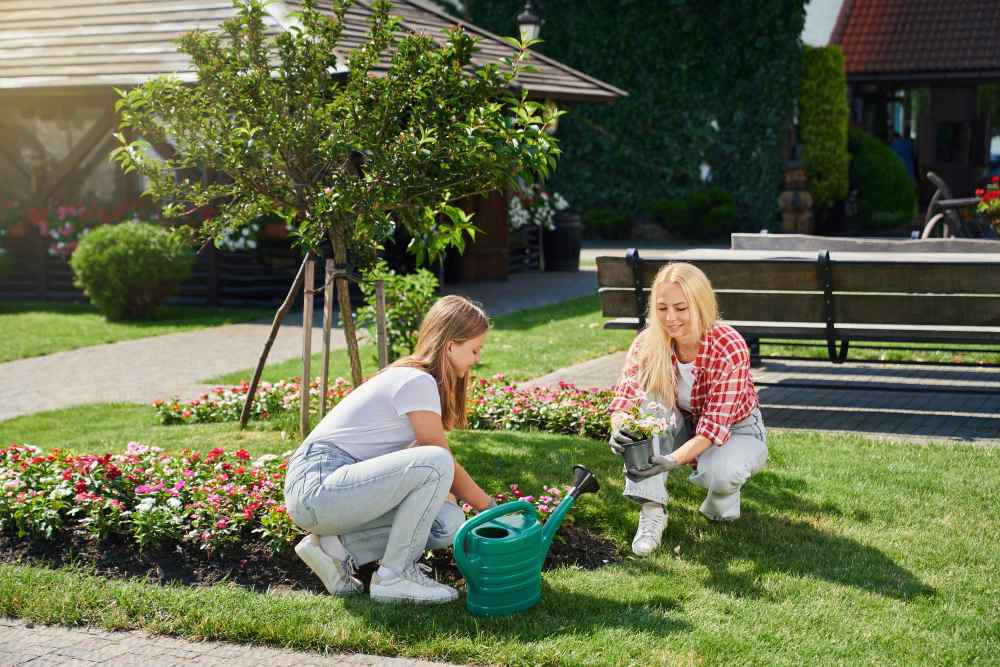
In the heart of bustling cities, a quiet revolution is taking root. Community gardens, those vibrant oases amidst concrete jungles, wield a transformative power far beyond their lush borders. Let's explore the profound impact of these green havens on urban developments, weaving threads of connectivity, health, sustainability, and culture into the fabric of modern cityscapes. 1. Social Connectivity: Fostering Bonds Community gardens act as natural magnets, drawing residents together. Friendships blossom as neighbors unite to cultivate the land, transcending age, background, and status. These shared endeavors forge connections, building a sense of belonging that enriches the community spirit. In planting, tending, and harvesting, individuals form bonds that transcend the digital age, rekindling the age-old tradition of communal harmony. 2. Holistic Well-being: Nurturing Health Amidst the foliage and blooming blossoms, a bouquet of health benefits flourishes. Community gardens offer more than fresh produce; they nurture physical, mental, and emotional well-being. Engaging in gardening promotes physical activity, reducing stress and enhancing mental clarity. The sensory delights of nature stimulate the senses, serving as a natural balm for urban fatigue. Community gardens become sanctuaries of holistic health by cultivating crops and well-being. 3. Sustainable Urban Sanctuaries Amidst the concrete sprawl, community gardens stand as symbols of sustainable living. These green pockets combat urban heat islands, purify the air, and mitigate stormwater runoff. They showcase environmentally conscious practices, educating residents on composting, water conservation, and native plantings. Community gardens inspire eco-friendly living by serving as sustainability microcosms, transforming concrete landscapes into thriving, green urban sanctuaries. 4. Culinary Treasures: Nourishing Culture Community gardens are treasure troves of culinary culture. As diverse plants flourish side by side, they celebrate the rich tapestry of heritage. These gardens become living pantries of ethnic flavors, supplying fresh ingredients for traditional dishes. Cultural festivals and cooking workshops hosted within their leafy confines celebrate diversity, bridging cultural gaps and enriching the urban experience. Community gardens nurture a gastronomic journey, intertwining flavors and traditions worldwide. 5. Educational Nurturing: Cultivating Knowledge Beyond their beauty, community gardens serve as open-air classrooms. They cultivate a sense of wonder, inviting curious minds to explore the mysteries of nature. Schools and community organizations collaborate, teaching children about biology, ecology, and nutrition. Hands-on learning transforms abstract concepts into tangible experiences, nurturing a generation of environmentally conscious citizens. Through the humble act of planting seeds, community gardens sow the seeds of knowledge, cultivating future stewards of the earth. 6. Urban Aesthetics: Enhancing Beauty Community gardens emerge as living works of art in a concrete and steel realm. They infuse urban landscapes with bursts of color, texture, and fragrance, softening the harsh edges of the built environment. By enhancing aesthetics, these gardens offer visual respite, soothing eyes weary from the monotony of city life. The synergy of flora and design creates harmonious havens that elevate the urban experience, reaffirming the profound impact of beauty on well-being. 7. Economic Empowerment: Nourishing Livelihoods Community gardens bear economic fruit as well. They incubate micro-businesses, empowering local entrepreneurs to sell fresh produce, crafts, and artisanal products. Farmers' markets and garden-based enterprises inject economic vitality into neighborhoods, fostering self-reliance and financial sustainability. The gardens become fertile grounds for innovation, nurturing dreams, and enabling livelihoods contributing to the local economy. 8. Green Therapy: Cultivating Mindfulness Within the tranquil embrace of community gardens, a therapeutic escape beckons. These green sanctuaries offer respite from the cacophony of urban life, inviting individuals to engage in mindful contemplation. Tending to plants, witnessing their growth, and immersing in nature's rhythms becomes a form of meditation. The therapeutic effects of green therapy ripple through the community, promoting mental resilience and emotional well-being. Community gardens are more than just green spaces; they're seeds of transformation that germinate change. From fostering connections and nurturing well-being to embodying sustainability and celebrating culture, these urban sanctuaries thrive as symbols of resilience, vitality, and community spirit. As cities continue to evolve, the power of community gardens remains an enduring testament to the potential of nature to transform and enrich urban developments.
Enter your email address and we will send you a link to change your password.